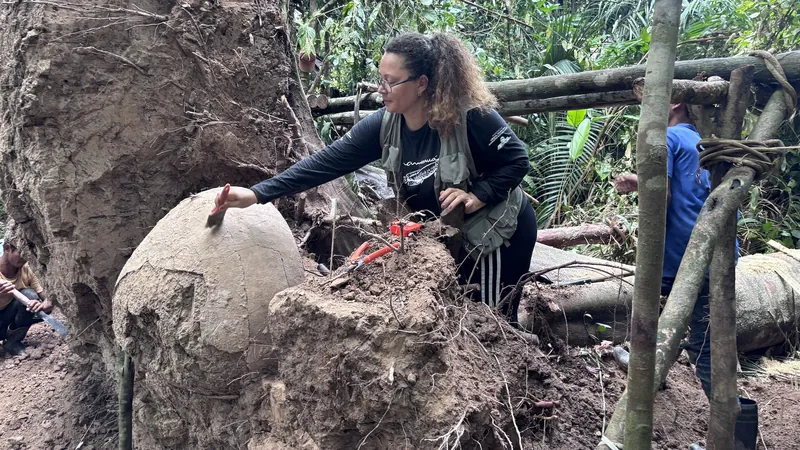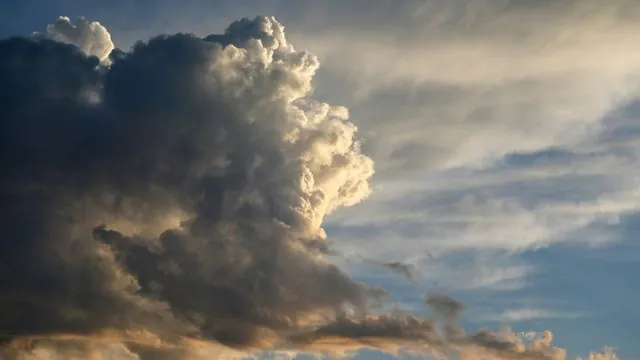
Unearthed Treasures: Ancient Funeral Urns Discovered in the Heart of the Amazon
2025-06-26
Author: Yu
A Stunning Discovery in the Brazilian Amazon
In a breathtaking find, seven enormous funeral urns dating back to pre-Columbian times have been uncovered deep in the Brazilian Amazon rainforest. This remarkable discovery was made by a local fisher in a rarely explored waterlogged region of the middle Solimões, when a towering 50-foot Paricarana tree collapsed, revealing the urns hidden beneath.
Unraveling the Mysteries of the Past
The exact age of the urns remains a mystery; they could be centuries or even millennia old. Their burial site, a man-made island, presents intriguing questions about the culture responsible for crafting both the islands and the urns, as noted by archaeologists from the Mamirauá Institute for Sustainable Development (IDSM) in Brazil.
Ceramic Gems Filled with Secrets
Two of the larger urns, reaching up to 35 inches in diameter, contained human remains, while the others held a fascinating mix of seeds and the bones of fish, frogs, and turtles. Geórgea Layla Holanda, an archaeologist involved in the excavation, suggested these organic materials were integral to ancient funeral rites.
An Insight into Ancient Rituals
Holanda emphasized that these finds are "unprecedented"; the large urns lacked ceramic lids, likely sealed instead with organic materials that have long since decomposed. She compared them to similar findings in the area, noting that those urns featured lids designed to resemble heads, complete with limb imitations. The discovery of greenish clay, alongside fragments with painted red bands, hints at a rich artistic culture yet to be fully understood.
A Commemoration of Life and Death
Archaeologists are already familiar with the multifaceted nature of funerals involving urns. According to Holanda, the process traditionally involved placing the deceased in a river basket for fish to consume soft tissues or burying the body. The disarticulated bones were later cremated and stored within urns, symbolizing a transformative rebirth — a new body, a new skin.
Community-Driven Excavations
The month-long excavation was a joint effort with the local community of São Lázaro do Arumandubinha, who initially alerted researchers to the urns. Archaeologist Márcio Amaral highlighted the importance of community collaboration, which helped the team strategically plan their work around the seasonal flooding of the river.
An Expedition into the Heart of the Rainforest
Reaching the excavation site required intense dedication: the research team embarked on a grueling 24-hour boat journey along the winding Amazon River, followed by a trek through flooded areas and a walk through dense forest, aided by machete-wielding guides.
Protecting History Beneath the Surface
The urns rested approximately 15 inches deep on an artificial island, skillfully built by ancestral Indigenous peoples to shield their community from the wrath of seasonal floods. With the excavation complete, researchers are now poised to date the urns, while also investigating reports of other urns scattered across nearby archaeological sites.



 Brasil (PT)
Brasil (PT)
 Canada (EN)
Canada (EN)
 Chile (ES)
Chile (ES)
 Česko (CS)
Česko (CS)
 대한민국 (KO)
대한민국 (KO)
 España (ES)
España (ES)
 France (FR)
France (FR)
 Hong Kong (EN)
Hong Kong (EN)
 Italia (IT)
Italia (IT)
 日本 (JA)
日本 (JA)
 Magyarország (HU)
Magyarország (HU)
 Norge (NO)
Norge (NO)
 Polska (PL)
Polska (PL)
 Schweiz (DE)
Schweiz (DE)
 Singapore (EN)
Singapore (EN)
 Sverige (SV)
Sverige (SV)
 Suomi (FI)
Suomi (FI)
 Türkiye (TR)
Türkiye (TR)
 الإمارات العربية المتحدة (AR)
الإمارات العربية المتحدة (AR)